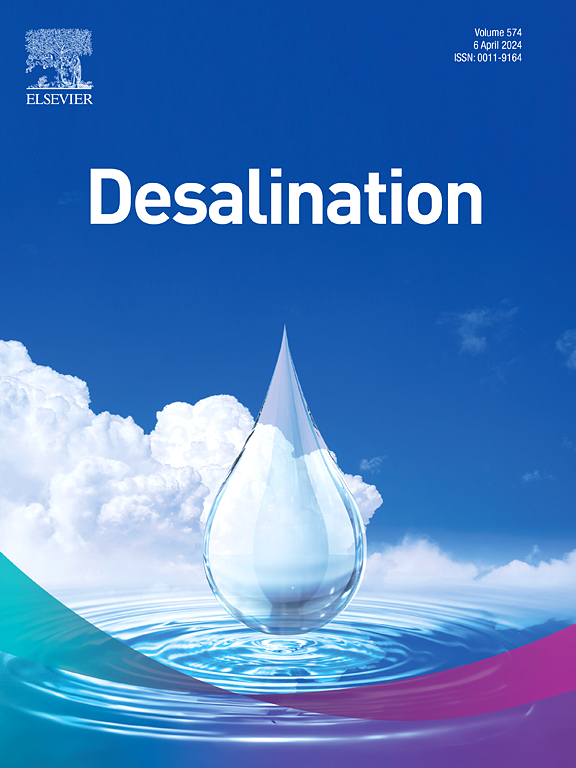Innovative solution for the recovery of clean water and high-purity minerals from the coal mine sector
IF 9.8
1区 工程技术
Q1 ENGINEERING, CHEMICAL
引用次数: 0
Abstract
Coal mining activities generate massive volumes of highly saline wastewater that cause significant ecological damage once they end up in the environment. Saline discharges contribute to the salinization of soil, the disruption of the aquatic flora and fauna, and the degradation of surface water quality. To address this issue, a near-zero liquid discharge (near-ZLD) system has been designed and constructed to treat coal mine wastewater before its discharge into the environment. The pilot system included membrane, precipitation, and thermal technologies to desalinate the water and to recover valuable products, including Europe's critical material, magnesium, as magnesium hydroxide with >84 % purity. Calcium carbonate, calcium sulphate, and sodium chloride were also recovered from the wastewater with high purity: over 96 % for CaCO3 and CaSO4, and >99.9 % for NaCl. The recovered water showed high purity with a conductivity below 400 μS/cm. The pilot system energy consumption was 421 kWh/t of salt with >90 % overall water recovery. The results show that the proposed technology, if implemented in a much larger scale, has a potential to decrease the salt load discharged into surface water.

用于从煤矿部门回收清洁水和高纯度矿物的创新解决方案
煤矿开采活动产生大量高盐废水,一旦进入环境,会造成严重的生态破坏。盐分排放导致土壤盐碱化,破坏水生动植物,降低地表水质量。为了解决这一问题,设计并建造了一个近零液体排放(near-zero liquid discharge, near-ZLD)系统,对煤矿废水进行排放前处理。该试验系统包括膜、沉淀和热技术,以淡化水并回收有价值的产品,包括欧洲的关键材料镁,作为纯度为84%的氢氧化镁。废水中碳酸钙、硫酸钙和氯化钠的回收率也很高,CaCO3和CaSO4的回收率超过96%,NaCl的回收率达到99.9%。回收水纯度高,电导率低于400 μS/cm。试验系统能耗为421千瓦时/吨盐,总水回收率为90%。结果表明,如果在更大的规模上实施,该技术有可能减少排入地表水的盐负荷。
本文章由计算机程序翻译,如有差异,请以英文原文为准。
求助全文
约1分钟内获得全文
求助全文
来源期刊

Desalination
工程技术-工程:化工
CiteScore
14.60
自引率
20.20%
发文量
619
审稿时长
41 days
期刊介绍:
Desalination is a scholarly journal that focuses on the field of desalination materials, processes, and associated technologies. It encompasses a wide range of disciplines and aims to publish exceptional papers in this area.
The journal invites submissions that explicitly revolve around water desalting and its applications to various sources such as seawater, groundwater, and wastewater. It particularly encourages research on diverse desalination methods including thermal, membrane, sorption, and hybrid processes.
By providing a platform for innovative studies, Desalination aims to advance the understanding and development of desalination technologies, promoting sustainable solutions for water scarcity challenges.
 求助内容:
求助内容: 应助结果提醒方式:
应助结果提醒方式:


